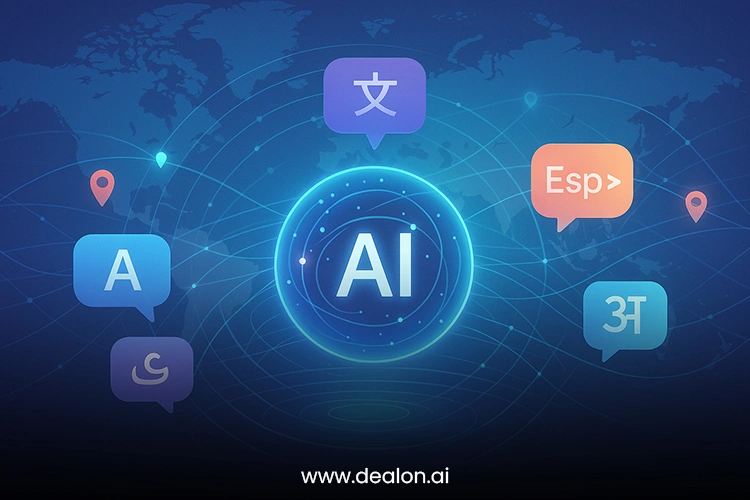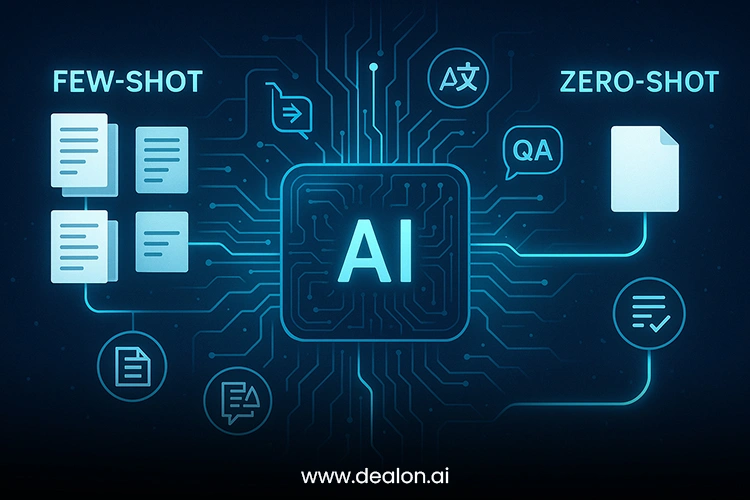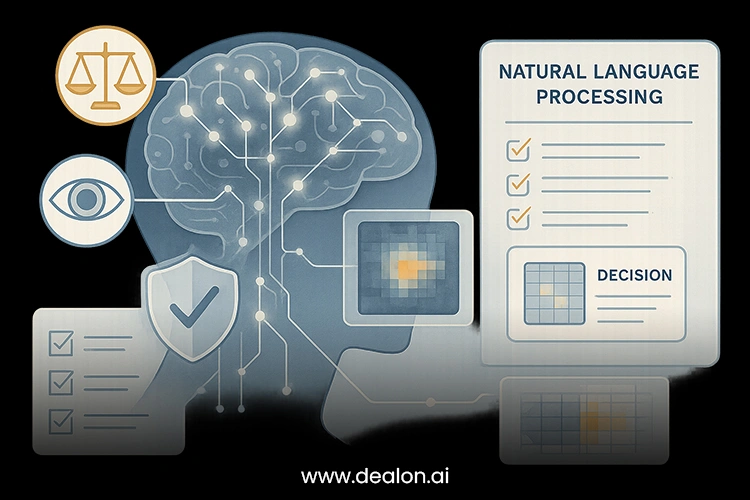A key part of artificial intelligence, Natural Language Processing, is dramatically improving how machines handle human language. Because of new technologies, NLP has become complex and adaptable and supports progress in many sectors. In the past ten years, NLP has expanded a lot, so now machines can grasp language in any form and communicate with humans meaningfully and appropriately. The new paradigm has introduced automation, better experiences for everyone, and more AI decision-making.
Increasing computer resources, access to large datasets, and better neural network designs have helped NLP grow rapidly. In modern times, the field’s growth is influenced by many upcoming trends, broadening what can be done. Some new trends are NLP systems that work in multiple languages, zero-shot learning that lets models adapt easily, and using models that respond to voice, written content, and images. People are becoming more interested in the moral aspects of Natural Language Processing as everyone wants AI to be fair and transparent.
They are changing the direction of Natural Language Processing and helping to develop AI systems that can converse, learn, and adapt as people do. Many consequences follow—such as chatting robots feeling emotions and AI using multiple languages and cultures easily. Looking ahead in the NLP field, machines will soon become more intuitive, empathetic, and intelligent in how they work with us.
Also Read: 6 Key Differences Between Machine Learning and Deep Learning: A Comprehensive Guide
The Role of NLP in Enhancing Customer Experience Across Industries
Natural Language Processing (NLP) transforms customer experience by enabling businesses to interact with customers more naturally and efficiently. Across industries like retail, banking, healthcare, and telecommunications, NLP-driven solutions are reshaping how companies understand and respond to customer needs.
Customers now benefit from round-the-clock support that is quicker, more customized, and more aware of the context. Language processing skills allow these systems to process customer queries, determine their feelings, and predict their requirements. For example, a chatbot used in retail might recommend products the customer had bought before or was searching for. Customers can also be notified instantly by banking bots about their transactions or any suspected fraud, which raises trust in the bank.
They make clients and companies communicate easier, improving customer satisfaction even when the languages are different. Inclusivity allows companies to serve more people and keep their loyal clients. Also, NLP will enable companies to review large amounts of unorganized data from customer reviews, social media, and support tickets.
Using sentiment analysis and topic modeling, businesses learn what customers think and struggle with, which assists them to improve their products and services. Ensuring a good customer experience with NLP also means handling ethical concerns. Ensuring that AI interacts with users faithfully and respects their privacy ensures customers trust the company and follow the rules.
1. Multilingual and Cross-Lingual Natural Language Processing

The need for inclusive technology reaches its highest point as the world becomes more connected. Multilingual and cross-lingual models developed through Natural Language Processing (NLP) are helping to solve this challenge by going beyond the restrictions of older language systems. Over the years, these types of language models had a hard time dealing with under-represented languages. This caused a big problem, especially for programs focusing on languages outside the main English-centered NLP world. Thanks to XLM-R (Cross-lingual RoBERTa) and mBERT (Multilingual BERT), machines can now manage many languages well, with little need for supervision and training.
Next-generation NLP models have significantly increased how much and well the field can work. XLM-R and its members do not need individual models for every language like their predecessors did; one standard model handles different language types well. Since cross-lingual transfer learning lessens the requirement for big, language-specific data sets, NLP methods can be used more freely in underrepresented languages.
The discoveries are having a significant effect on how we live. Thanks to language-agnostic applications, companies are better able to work internationally without encountering language challenges. For example, tools that interpret speech and automatically translate it are now used worldwide, and chatbots can now understand and reply in many languages. Because of these models, businesses can talk to users in their languages, making the experience more inclusive.
Furthermore, the rise of cross-lingual Natural Language Processing makes supporting and keeping different languages alive easier, so people communicate freely across cultural groups. If NLP keeps advancing, its milestones will guide us toward a more unified digital world worldwide.
2. Zero-Shot and Few-Shot Learning: Making NLP Models More Efficient

An essential change in Natural Language Processing is using zero-shot and few-shot learning, which makes machine learning models work better and adjust to new situations. Generally, training NLP systems requires plenty of labeled data for each type of task, which is costly and takes a long time. Most models work best when trained on massive datasets specific to each task, making it challenging to work in multiple areas. Still, zero-shot and few-shot learning means that models can do tasks they have never seen while training, which differs significantly from the older method.
A model using zero-shot learning can perform a task without seeing or being trained on examples of that task before. This works by linking what it is taught to its prior experiences and using them to make predictions. On the other hand, few-shot learning makes it possible for models to handle tasks with just a small amount of training data. The paradigm allows the model to pick out key information from limited examples, making it usable in many applications.
GPT-4 and T5 models are leading this revolution by being able to generate text, answer questions, summarize written pieces and write code with very few starting points. Because of this, industries and applications that need large amounts of labeled data are now more accessible. By creating personalized content, developing chatbots, and helping with data-based choices, these new developments help Natural Language Processing models become more approachable, quicker to use, and run on a larger scale.
This has led to zero-shot and few-shot learning to help NLP reach more sectors, making integrating AI-powered automation more versatile and straightforward. Clever models that can change and adapt to new circumstances will be more common in the future of NLP, requiring only little human guidance.
3. Ethical and Explainable NLP: Towards Transparent AI

The rise of NLP in essential industries like healthcare, finance, and law is causing people to pay greater attention to their ethical aspects. Because NLP affects individuals significantly, these systems should be open and responsible in their decisions. People are now paying more attention to explainable AI (XAI), intending to build systems that let humans understand their choices. This becomes especially important when decisions matter a lot since they could result in significant harm.
Interpretable NLP models are what drive this trend. Black-box systems provide results without explaining their process, but modern NLP tries to provide insight into each result. Scientists are working with attention models, saliency maps, and other local techniques to help people understand how the model makes decisions. Interpretability matters a lot in healthcare since mistakes in diagnosis or treatment decisions made by hard-to-understand algorithms could be fatal.
Also, the ethics of NLP are about more than just being transparent; they also include making these systems fair. Often, when NLP models are biased, it is due to the biased data they are trained on, and these models can result in unfair treatment of some groups. In an attempt to reduce bias, organizations and experts are working to identify and stop bias in data before it can cause models to prefer one demographic or group. Fairness is promoted as central to ethical NLP development because it supports the broader aim of making AI accessible to all people.
Ethical and easy-to-understand models will be necessary when NLP systems are often used for decisions. It is essential that Natural Language Processing progress by ensuring systems work correctly and transparently so that trust in AI remains intact.
4. Conversational AI and Emotion-Aware Interfaces
Now, Conversational AI can sense emotion, consider context, and be focused on people, unlike before when its primary goal was getting answers from databases. Modern NLP methods are designed to process comments and extract feelings, purposes, and sentiments from communication. Because of this, we now have virtual assistants and bots in customer service that are more compassionate, swift to help and form better relationships with people.
Affective computing, a field of AI that deals with human feelings, is used in emotion-aware user interfaces. They can understand how a user feels at any moment by looking at tone, conversation choices, and noticeable expressions or changes in voice prosody. Assuming a user is seen to be agitated, the virtual assistant could start speaking more softly and suggest things that address the user’s concern. Because of these emotions, talking with a chatbot feels less like talking to a robot and more like speaking to someone.
Possible uses for emotion-aware conversational agents are extensive. These systems allow mental health support apps to offer live emotional support, modify their messages and advice based on how the app is utilized, and tailor their advice for the user’s mental health. Also, AI supports e-retailers by suggesting items that fit a customer’s interests and current mood, increasing their enjoyment and time spent shopping.
With Conversational AI, digital interactions are changed by combining sentiment analysis and appropriate responses to what people say. With the help of NLP and affective computing, firms can better engage users emotionally and forge a solid bond between technology and people. In doing so, it creates helpful AI systems that are very considerate and relatable to people,
5. Integration with Multimodal Learning: Beyond Textual Data
NLP is seeing a significant change now that multimodal learning allows models to handle different data types together. Essentially, this step moves away from the usual NLP approach which mostly covers written text, as algorithms can look at real-world situations in a fuller, more detailed way.
The shift is mainly driven by CLIP (Contrastive Language-Image Pretraining) and GPT-4’s vision capabilities, which essentially improve how machines interact with data from multiple forms of information. Using CLIP, systems can match photos to texts, generate visual descriptions, and look through pictures using amounts of text for search. Likewise, being able to handle vision tasks, GPT -4 can smoothly integrate textual and visual data to participate in tasks like creating image captions, summarizing videos, and having media knowledge.
Merging different types of data increases the use of NLP for jobs that require analyzing many kinds of inputs. In these vehicles, multimodal models can make real-time navigational decisions using cameras, detectors, and textual guides. Virtual reality (VR) environments use AI to react to what users do and see, providing a realistic and engaging interaction based on their actions. In interactive learning, multimodal AI helps put spoken words together with visual materials, allowing students to engage more and better understand.
The evolution of multimodal models will significantly influence artificial intelligence and allow machines to process the world like humans by merging language with sight, hearing, and actions in a single system. With this shift, AI can handle and understand more challenging data sets more efficiently.
Conclusion
Changes in Natural Language Processing are improving how computers process human language. As the trends above suggest, NLP can change industries and make AI systems more like ours. By breaking down language barriers, multilingual and cross-lingual NLP allows global communication and makes people from different cultures feel included. Having zero-shot and few-shot learning gives NLP the power to work better with less data and tackle more issues. As NLP is used more in healthcare, finance, and law, ethical and explainable AI concerns are rising.
A fair and open approach in these systems comes from responsibility, not just from using new technologies. Besides, new technologies in conversational AI allow virtual assistants and chatbots to react and respond in a way that includes feeling and real-world understanding. Using several kinds of information together helps NLP in AI go beyond what it could do before so that machines can use, for instance, text, pictures, and audio all together. Because of these trends, the future will focus more on efficiency, fairness, and doing the right thing, leading to strong, human-centered AI.

